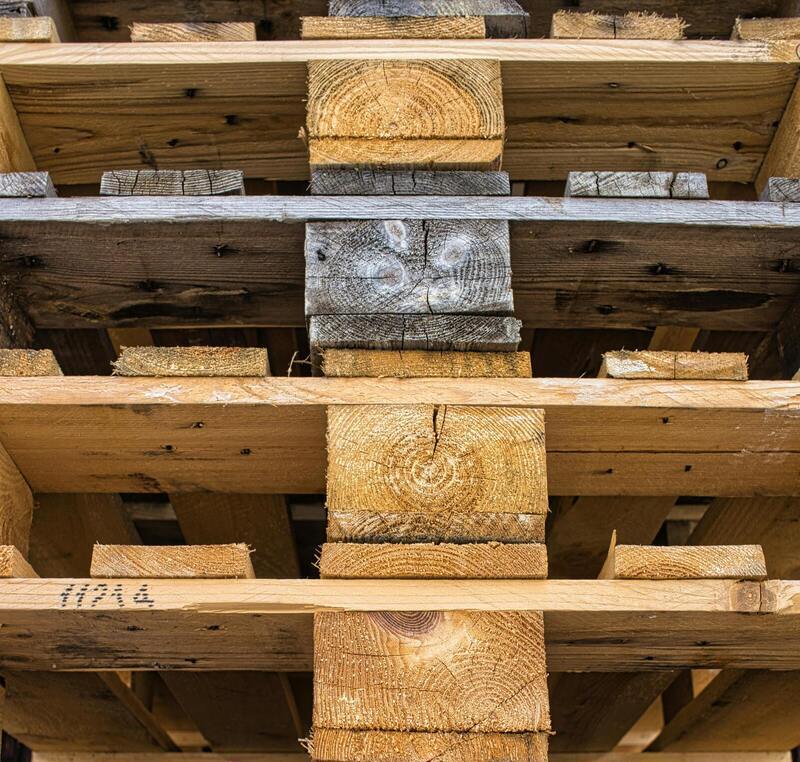Celebrating 65 years of Ayoubi Steel!
Types of Pallets and Their Uses

A pallet serves as a sturdy framework designed to support and stack various loads, products, or items. In warehouse settings, pallets are typically transported from one location to another using forklifts or pallet trucks.
Types of Pallets
Pallets can be categorized based on their dimensions or the materials from which they are made.
The classifications of pallets by size include:
Europallet
The Europallet, also known as EPAL, measures 1,200 x 800 mm. It has an approximate weight of 25 kg and is capable of supporting loads up to 1.5 tons.
Key characteristics:
- Measurements: Length 800 mm, Width 1,200 mm.
- Material: Constructed from wooden boards.
- Weight: Roughly 25 kg.
- Safe Working Load During Movement: 1,500 kg.
- Static Load Capacity: When stationary, the maximum load should not exceed 5,500 kg.
American Pallet
The American Pallet measures 1,200 mm x 1,000 mm and is often referred to as the universal pallet or isopallet.
Key characteristics:
- Measurements: Length 1,000 mm, Width 1,200 mm.
- Weight: Approximately 25 kg.
- Safe Working Load During Movement: 1,500 kg.
- Static Load Capacity: When stationary, the maximum load should not exceed 6,000 kg.
The classification of pallets based on their material composition includes the following types:
Wooden Pallets
Wooden pallets are the most commonly utilized option due to their reliability, durability, and ease of repair. However, they are prone to damage from forklifts and require disinfection, making them challenging to clean.
Plastic Pallets
Plastic pallets are lighter than their wooden counterparts and offer greater ease of cleaning and disinfection. They are also environmentally friendly, being fully recyclable. On the downside, plastic pallets tend to be more expensive than wooden ones and may deform under heavy loads. Their strength and longevity depend on the specific type of plastic used.
Metal Pallets
Among the various types, metal pallets are the most robust and heaviest. They boast a long lifespan and can support substantial weights. Additionally, they are simple to clean and disinfect. Nevertheless, the transportation costs for metal pallets are higher due to their weight compared to wooden or plastic options.
Cardboard Pallets
Cardboard pallets are suitable for lighter loads. They are cost-effective and easy to manage, but their lifespan is limited due to their restricted usage.
Recommendation While Loading Products on Pallets
The following guidelines should be observed when loading products onto pallets:
- The load must not exceed the pallet’s weight limit (e.g., 1.5 tons).
- The load should not surpass the pallet’s dimensions; if it does, shrink wrapping is recommended.
- It is essential to know the height and weight of the load to determine how many pallets can be transported on trucks or stored in a warehouse.
- Minimize gaps between pallets when stacking them to prevent unbalanced loads.
- Products should be arranged on the pallet in a way that facilitates easy handling by forklifts.
